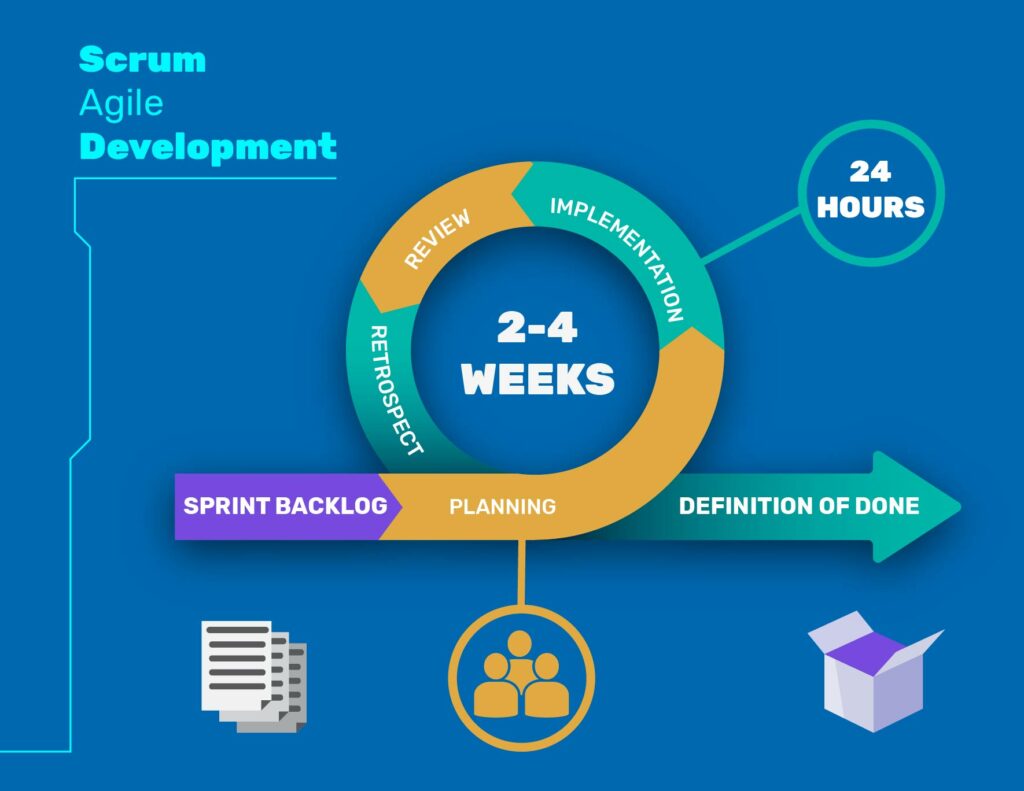Development methodologies encourage a disciplined approach to project management, leading to best practices. As a result, fast delivery of a high-quality product or software flows. In addition, methodologies provide an improved commercial lens that aligns development with the customer’s demands.
Wondering about which methodology to choose to carry out a project is common. Therefore, knowing the differences between Scrum and Agile methods is key to choosing the one that best suits the needs of your assignments.
First, Agile refers to agile methodologies. It includes project management techniques using an incremental and iterative approach to running tasks. It derives from the Agile Manifesto of 2001, and although it arose in software, it has already been implemented in many other areas.
If we follow an agile development, we will follow an adaptive life cycle in the face of changes. This approach has the peculiarity that the product evolves throughout the project, so it is neither designed nor planned. The goal? Greater flexibility towards adjustments. Also, in an agile development environment, the product is created and presented to the customer in short intervals, known as sprints.
Agile is the ideal methodology to follow for IT projects in which there are constant changes or fixes very quickly due to new customer decisions or variations in the environment. It comes so that adjustments at the last minute don’t necessarily become a more significant problem because it allows great flexibility.
As for Scrum, this is a process in which a set of good practices are applied regularly. It contemplates collaborative teamwork, in which partial and regular deliveries of the final product are to be made.
Scrum is an agile process that allows you to focus on delivering business value in the shortest time possible and inspects existing work software quickly and repeatedly.
Scrum is often used in complex projects, where requirements constantly vary or are poorly defined from the outset. It is also used to solve extreme situations: high costs, delays in delivery, and unacceptable quality, among others.
The way to work on a Scrum project goes through short time cycles and a fixed duration. It consists of iterations of about two weeks, in which the customer gets an ever-evolving picture of how the final product would look.
Still, because Scrum follows the incremental development strategy of agile development frameworks, it is normal at this point to have doubts about which methodology to follow. Although Scrum is a way to be agile, they are not the same.
Agile is much more than a methodology or a framework. It is a set of values and principles to avoid typical software development problems. As far as we can tell, Agile is something of a movement against traditional software development methodologies, so it represents principles as such.
Scrum, unlike Agile, is not a methodology. Scrum is a framework because it is formed by a series of events, artifacts, roles, and rules made for a particular purpose, so if you do not follow them step by step, you will not be doing Scrum. Adopting one or the other should be based on your company’s needs and your managing personnel’s expertise. This is not a make-or-break choice but can influence your team’s workflow for years to come.



